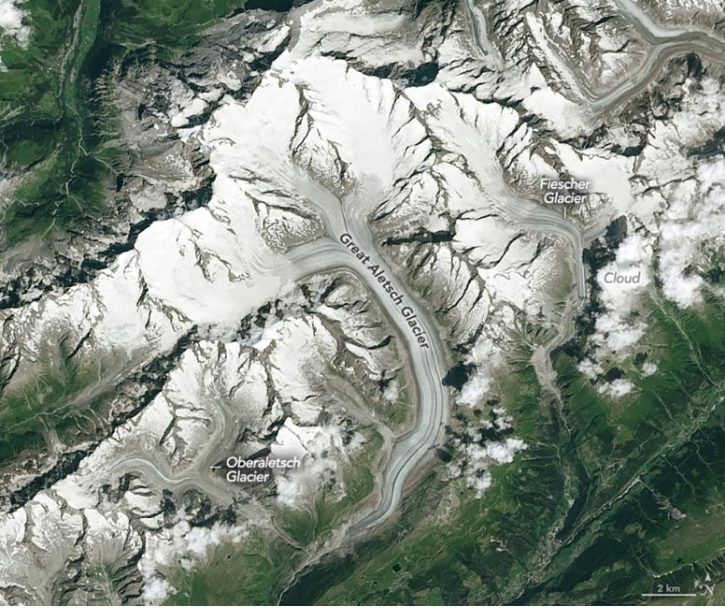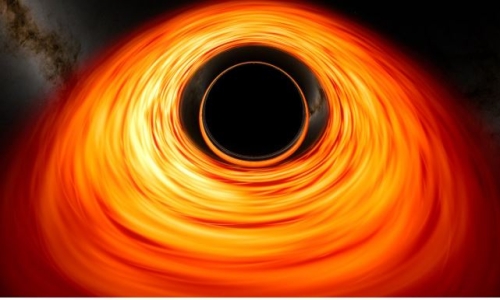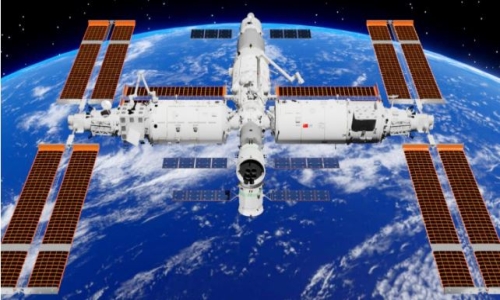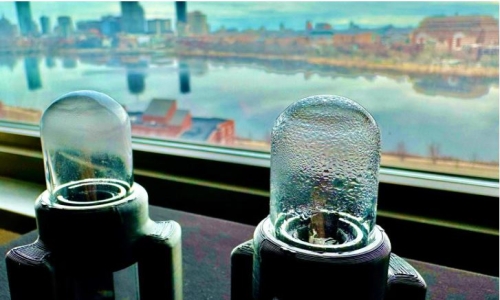


 10:35:1
10:35:1  2025-03-18
2025-03-18  951
951

The Alps, home to the iconic Aletsch Glacier, are undergoing a dramatic transformation. Satellite imagery spanning four decades reveals a stark retreat and thinning of this once-massive ice formation.
With over 1,300 meters lost since 1984, Aletsch and its neighboring glaciers are shrinking at alarming rates. A scorching 2024 summer only worsened the crisis, stripping Swiss glaciers of 2.5% of their volume. Meanwhile, Central Europe has lost nearly 40% of its glacial ice in the past two decades.
The Alps: A Majestic Yet Changing Landscape
Stretching over 1,000 kilometers and spanning eight European countries, the Alps are one of the world’s largest and highest mountain ranges. They are home to thousands of glaciers, including the Great Aletsch Glacier (Grosser Aletschgletscher) in southwestern Switzerland, the largest in the range. However, like many glaciers in the Alps, Aletsch is steadily retreating and thinning.
A comparison of satellite images taken over the past 40 years reveals this ongoing transformation. The Thematic Mapper (TM) on Landsat 5 captured an image of the glacier in September 1984 (lower image above), while the Operational Land Imager (OLI) on Landsat 8 provided an updated view in August 2024 (upper image above).
As of March 2025, obtaining a new, unobstructed image remains challenging due to seasonal snowfall covering parts of the glacier. Even in late summer, some visible differences may be due to lingering snow. Despite this, the shrinking length and width of the glaciers are unmistakable. (Some of the smaller glaciers toward the right side of the image are partially obscured by clouds.)
Glacier Retreat and Ice Loss
The shortening and narrowing of a glacier’s surface area—parameters visible in Landsat images—can indicate a net loss of ice mass. For example, imagine two equal-sized bowls filled with different amounts of water; the bowl with less water would display a lower surface height and smaller area. The same is generally true for glacial ice that flows along U-shaped valleys.
According to the Swiss Glacier Monitoring Network (GLAMOS), Aletsch has retreated more than 1,300 meters (4,300 feet) since 1984. It has also thinned, contributing to the glacier’s narrower appearance in the 2024 scene. In the span of four decades, GLAMOS data indicate that the glacier has lost 43 meters of water equivalent.
Neighboring Glaciers Also in Retreat
Aletsch’s neighbors also show decline, albeit more subtly. Since 1984, Oberaletsch Glacier to the left has retreated more than 240 meters, and Fiescher Glacier to the right has retreated more than 1,000 meters.
These images follow a particularly warm summer in 2024 that melted the abundant snowfall from the previous winter, according to news reports. Swiss glaciers that year lost 2.5 percent of their volume.
Global Glacier Trends: A Larger Crisis
Glaciers in other parts of the world, such as Alaska in the United States, have contributed more in terms of total mass loss, according to a recent assessment of the glacier mass changes in regions across the planet between 2000 and 2023. However, the largest relative losses during that period occurred in areas with smaller glacial area. Central Europe, for example, which includes Switzerland, lost 39 percent of its glacial ice during that time.
Reality Of Islam |
|

If you'

Imagine bei

MIT en
 9:3:43
9:3:43
 2018-11-05
2018-11-05
10 benefits of Marriage in Islam
 7:5:22
7:5:22
 2019-04-08
2019-04-08
benefits of reciting surat yunus, hud &
 9:45:7
9:45:7
 2018-12-24
2018-12-24
advantages & disadvantages of divorce
 11:35:12
11:35:12
 2018-06-10
2018-06-10
 6:0:51
6:0:51
 2018-10-16
2018-10-16
the happy life of mankind requirement
 6:36:36
6:36:36
 2022-01-25
2022-01-25
 12:10:56
12:10:56
 2022-11-17
2022-11-17
 4:26:43
4:26:43
 2022-02-21
2022-02-21
 9:50:37
9:50:37
 2023-02-28
2023-02-28
al-hussain (peace be upon him)
 10:18:1
10:18:1
 2022-09-21
2022-09-21
 2:2:13
2:2:13
 2022-10-08
2022-10-08
 11:34:48
11:34:48
 2022-06-29
2022-06-29
 5:41:46
5:41:46
 2023-03-18
2023-03-18
| LATEST |